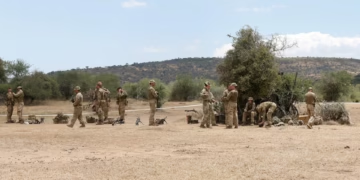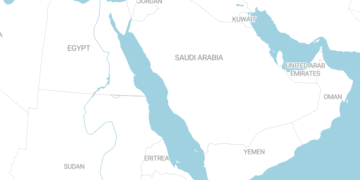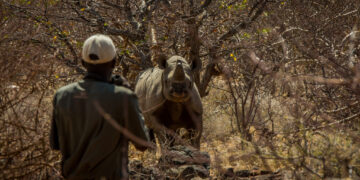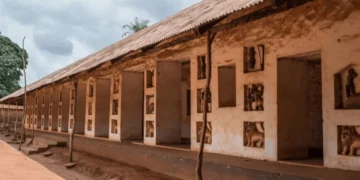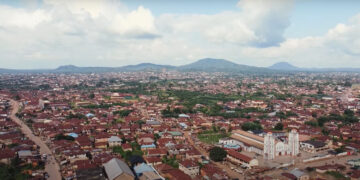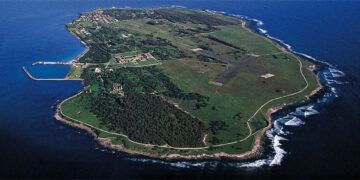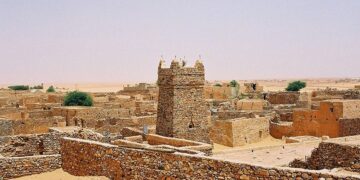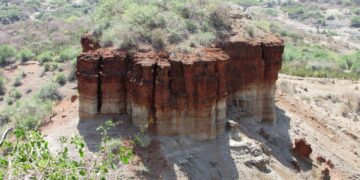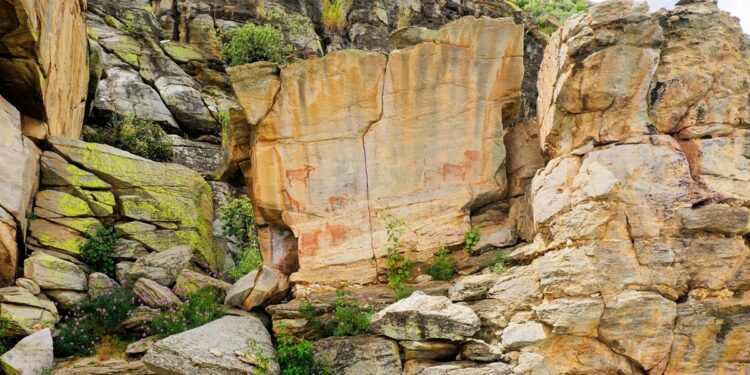The Tsodilo Hills is one of the most visible natural and cultural monuments in the south of the African continent, located in northwest Botswana near the border with Namibia, in Okavango Sub-District. These hills are of great importance because they contain rock inscriptions dating back thousands of years, making them a world heritage site of invaluable historical value.
The Tsodilo Hills, one of the highest concentrations of rock art in the world, are located in an arid and remote area, where rocks stand out like steadfast guardians in the face of time and natural changes. These hills consist of four main formations, known locally as “Man,” “Woman,” and “Child,” and one smaller hill, representing the locals’ assumed genders and familial relationships according to local beliefs. Numerous sacred natural springs and waterholes are found in the area and are essential to the region’s spiritual importance and have supported human life for thousands of years.
Tsodilo served as a safe haven during times of environmental hardship or conflict, offering a reasonably consistent source of water and supplies. The unique rock formation has earned it a sacred spiritual character in the region’s inhabitants, especially in the San tribes, who see it as a center of spiritual energy and communication with grandparents.
The Tsodilo Hills have long been associated with local mythology. The San, who had lived in this area for thousands of years, respected the hills as the resting place of their ancestors’ spirits.
Tsudelo Hills contain about 4,500 rock art inscriptions, making it one of the richest rock art sites in Africa. Dating back more than 20,000 years, the inscriptions depict human existence in the past and its relationship with the natural world and the creatures that surround it. The carvings depict exotic creatures like giraffes, elephants, and locusts, as well as elaborate geometric designs said to have religious or spiritual significance.
Local legends frequently mention the “First People,” who produced the rock art and inhabited Tsodilo in ancient times, tying the current residents to a deep ancestral past. Archaeological evidence indicates that early inhabitants of Tsodilo engaged in metalworking, particularly iron, suggesting a level of technological sophistication beyond simple hunter-gatherer societies.
According to Botswana Tourism:
“The Early Iron Age Site at Tsodilo, called Divuyu, dates back to between 700 and 900 AD. Findings at this site reveal that Bantu people have been living close to the hills for over 1,000 years, probably coming from central Africa. They were cattle farmers who settled on the plateau, trading copper jewellery from the Congo, seashells from the Atlantic, and glass beads from Asia, probably in exchange for specularite rock and furs. There was a great deal of interaction between different groups, and trade networks were extensive.
“Excavations also reveal over 20 mines that extracted specularite—a glittery iron-oxide derivative that was used in early times as a cosmetic.
Rock paintings are nearly everywhere, representing thousands of years of human inhabitation. They are amongst the region’s finest and most important. There are approximately 4,000 in all, comprising red finger paintings and geometrics. It is almost certain that most paintings were done by the San, and some were painted by the pastoral Khoe people who later settled in the area. The red paintings were done mainly in the first millennium AD.”
The Tsodilo Hills were designated as a World Heritage Site by UNESCO in 2001 due to their archeological and cultural value. This designation not only recognizes the mountains’ rich human legacy but also reinforces efforts to protect them from the many challenges that threaten their survival, such as erosion and climate change, which are affecting the rocks and inscriptions, gradually destroying them. Other challenges facing Tsodilo include uncontrolled tourism and overgrazing.
The Botswana government is working with international agencies to develop a strategy to protect Tsodilo Hills, including conducting awareness-raising campaigns among local residents, implementing barriers and travel activities to avoid damaging the site, and implementing a plan to restore some of the damaged structures.
According to UNESCO, “The site owned by the government is currently protected in terms of the Monuments & Relics Act 2001, and by conditions of the Anthropological Research Act 1967, National Parks Act 1967, and Tribal Act 1968.
“Declared a National Monument in 1927, the responsibility for looking after Tsodilo Hills rests with the Department of National Museum and Monuments in collaboration with the Tsodilo Management Authority, an independent advisory group comprising the Tsodilo Community Trust, community-based organizations, NGOs, and selected critical government-based departments.
“To ensure the conservation of all the site attributes, in 1997, a revised Integrated Management Plan was developed and approved by stakeholders. An integrated management plan detailing community initiatives was developed in 2007 and is currently being implemented in the buffer area of the site. With the assistance of the African World Heritage Fund, a Core Area Management Plan was developed for the site in 2009.”
In addition, Tsudelo Hills is popular with historians and archaeologists, making it an excellent destination for scientists and tourists interested in ancient human heritage. Archaeological and anthropological research at Tsodilo is ongoing, with new discoveries constantly adding to our understanding of the site’s history and significance. The site offers guided tours led by local interpreters who recount the myths and myths associated with the memorial. Visitors can walk and climb the mountain for spectacular views.







